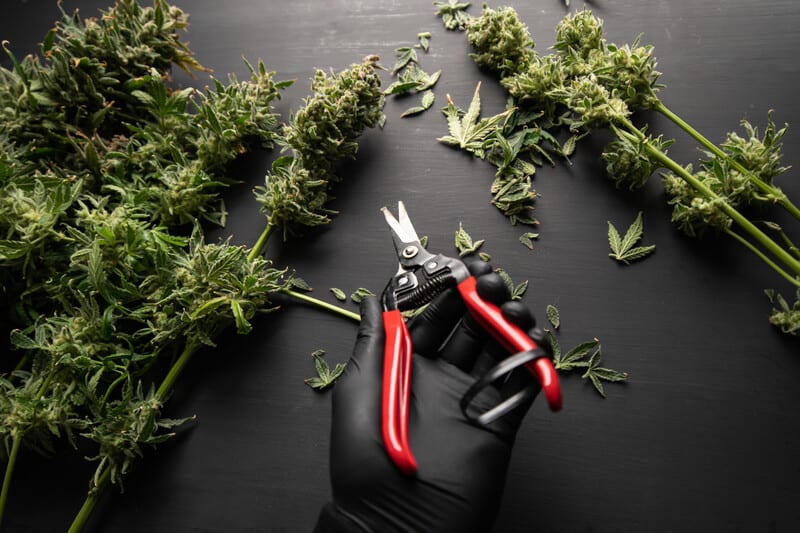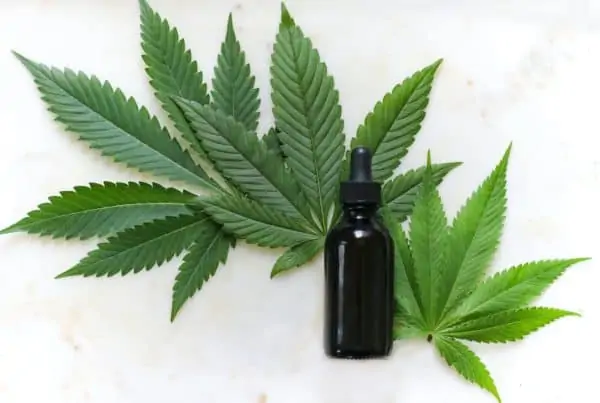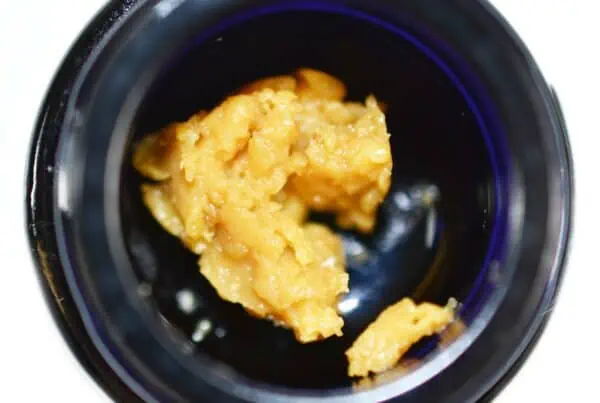TABLE OF CONTENTS
What is Cannabutter?
Cannabutter is also known as cannabis butter or weed butter. It is the main ingredient for a wide range of marijuana edibles. Most homemade edibles start with cannabutter.
If you truly love cannabis edibles, you should learn how to make edibles with trim, stems, wax, and leaves as soon as possible! The cannabis plant is amazing! It can be used until it is completely gone! Use all parts of your cannabis plant, weed stems, weed trimmings, weed leaves, and wax! So what is there to do with cannabis leaves, stems, and trim?
Read on to learn how to make butter from cannabis leaves. If you like what you read, you can enroll at Cannabis Training University to learn everything you need to start a career as a cannabis chef. You’ll get recipes for dozens of cannabis-infused products you can make with cannabis butter.
Why Use Trim, Leaves, and Stems For Cannabutter?
If you grow marijuana, you’ll have plenty of garden waste. Between culling males and defoliating plants, you’ll gather trimmings that are too harsh to smoke every single day. Many growers throw out useful parts of the marijuana plant that could have been used to make weed butter or other cannabis concentrates.
Don't think only cannabis flower is all you can use to make pot butter or cannabis concentrates because it is not! Want to make weed butter with cannabis stems?
Don’t waste that trash—turn it into stash! You can use leaves and cannabis stems for weed butter!
You might be wondering how to make cannabutter with leaves and stems. Trim, leaves, and stems are leftover cannabis materials that growers collect both during the grow cycle and after harvest. Although most of the active components of marijuana are in the flowers, some cannabinoids are in the sugar leaves, fan leaves, and other trim.
Sugar leaves, the tiny leaves that cluster around the marijuana flowers, contain between 5 and 7 percent cannabinoids. The large fan leaves found throughout the cannabis plant contain 2 to 3 percent cannabinoids.
Although these percentages are low for smoking, you can get more for your money by infusing those cannabinoids into butter. Use the trim and leaves from your cannabis plant to make edibles. Save the high-quality buds to smoke. Don't waste your leftover stems! Cannabis stems are gold!

Preparing the Cannabis Trimmings
So how do you make weed butter with trimmings? Do you wonder how to make cannabutter with fresh trim? Should you use wet or dry leaves for cannabutter?
To start the process of making cannabis butter, you must prepare the marijuana plant. Gather the leaves and dry them in a well-ventilated area. Chop the dried cannabis leaves into pea-sized pieces. Remove the cannabis stems.
Don’t use a coffee grinder or food processor. That will turn your trim into powder! The goal is to maximize contact between the leaves and the butter. You want to dissolve all the cannabinoids without getting any powdered leaf in your butter.
Why should you remove the cannabis stems? You can’t make cannabutter with stems. Since cannabis stems don’t contain enough cannabinoids to affect the potency, it’s best to remove them. If you don’t, they can puncture holes in the cloth that you’ll use later on to strain the cannabutter. It’s useless to learn how to make weed butter with stems. What should you do with cannabis stems? Save them, use them in cannabis tea.
How to Decarb Marijuana Trim, Leaves, And Marijuana Stems

Before you make weed butter from trim, your first step is you need to decarboxylate it. Decarboxylation is a process that uses high temperatures to “activate” the cannabis compounds. This turns non-intoxicating THCA into highly intoxicating THC. If you don’t decarboxylate, you’ll get the medical benefits of cannabis but not the high!
There are many ways to decarboxylate cannabis. The easiest way to decarboxylate trim, leaves, and cannabis stems is in the oven.
First step, put the cannabis leaves and stems for cannabutter in an ovenproof baking dish with a glass cover. Place an oven thermometer on top of the cannabis, positioned so you can see it through the cover. Cover the dish and place it in an oven preheated to 212°F (100°C).
Once the thermometer inside the baking dish reaches 212°F (100°C), heat it for another hour and a half. After you remove the dish from the oven, let it cool completely before you remove the cover.
You should also learn how to decarb kief if you want to become a cannabis chef.
Ingredients in Cannabutter

Although butter is an excellent solvent for cannabinoids like THC, you can use other types of oil too. The best oils to use are those that have triglycerides with medium-length chains. These oils, known as MCT oils, include olive oil, butter, and coconut oil.
This is good news for vegan marijuana enthusiasts. To make vegan cannabutter, just use olive or coconut oil instead of butter!
Clarified butter, also known as ghee, works better than butter for infusing cannabis. Clarifying the butter removes water and milk solids. Those parts of butter do not absorb cannabinoids, so they’re useless for making cannabutter.
Making Cannabutter With Trim
After you decarboxylate the weed, it’s time to make the weed butter. Put the decarboxylated cannabis in a crockpot. You can fit as much as a half-pound of cannabis in a standard crockpot. If you have less than an ounce of cannabis, use a mini-crockpot.
If you don’t have a crockpot, you can use a large pot on your stovetop.
Once your weed is in the crockpot, add eight ounces of oil (two sticks of butter) for every ounce of trim. Add enough water to completely cover the cannabis.
Set the crockpot to medium or turn the stove burner on low. Heat your mixture for 4 to 12 hours. Check your mixture frequently. Add water if it gets low. Adjust the settings as needed to keep the temperature around 150°F (65.5°C).
The Benefits of Using Cannabutter
There are several benefits to using weed butter. One benefit is that it allows you to efficiently use marijuana leaves, kief and trim. It is also easier to measure the doses, beginning with identical batches.
When you infuse butter with marijuana, you get cannabutter, which has been a recipe that many enthusiasts have enjoyed.
After you make cannabutter, you can use it in various recipes such as making pot brownies, cookies, and pasta sauce. You can also eat cannabutter by itself, which allows you to easily consume medical marijuana without having to smoke it.
Best Practices For Straining Cannabutter
When you’ve finished infusing your butter with cannabis, strain out the plant material. Line a strainer with three layers of cheesecloth. Place it over a collection container. Pour the mixture from your crockpot into the strainer.
Fold the cheesecloth around the leaves and squeeze out as much cannabutter as possible. Wear knit gloves (to protect your hands from the heat) covered by latex gloves (to protect the cannabutter from your knit gloves).
If you used butter or solid coconut oil as your oil, put the collection container in the refrigerator overnight. When the cannabutter is hard, you’ll be able to pour out the liquid water without losing any cannabutter.
Be sure to pat the butter dry to remove any excess water. Excess water can make your cannabutter moldy!
If you used a liquid oil, put the collection container in the freezer overnight. When the water is frozen, you’ll be able to pour the liquid oil into a collection container.
Storing Your Cannabutter
Now that you have a big batch of cannabutter, you might be wondering how to store cannabutter. If you know how long you can store the cannabis butter, you’ll be able to make the right amount so that nothing goes to waste.
The amount of time you can store cannabutter depends on where you store it and the type of oil you used. Infused butter lasts in the refrigerator for 60 days.
It will stay fresh in the freezer for up to 6 months!
Other cannabis infused oils last even longer. You can store infused olive or coconut oil in the refrigerator for 3 to 6 months. Ganja butter will stay fresh in the freezer for an entire year!
Cannabutter Potency And Dose
Back in the day, no one cared how many milligrams of THC was in their cannabutter. They just wanted to make it as strong as possible.
Now that legal dispensaries exist, people are starting to know their ideal THC dose. Because of that, people want to know how many milligrams of THC are in their homemade weed edibles.
You will never know exactly how many milligrams of THC are in your edibles unless you test it in a lab. However, you can make a good guess. You can estimate potency as long as you know the strength of the cannabis and how much weed and butter you used.
If you follow this recipe, you will use eight ounces of oil for every ounce of cannabis. If you used sugar leaves, your cannabutter will contain around 4.25 mg/gm of THC.
Your fan leaves cannabutter will contain around 1.7 mg/gm. In comparison, cannabis flowers with 20% THC will yield cannabutter with a potency of around 17 mg/gm.
If you want to know how to make strong edibles with trim, you need to reduce the amount of butter. If you use four ounces of butter for every ounce of cannabis instead of eight, your cannabutter will be twice as strong.
There’s a limit to how many cannabinoids your oil can absorb, though. Use at least four ounces of oil for every ounce of trim.
Today cannabis flower is on average 4 times as strong as it was just back in the early 1990's!
How to Use Cannabutter

Weed butter allows you to consume medical marijuana easily and discreetly without having to smoke it. After you make cannabutter, you can use it to make weed brownies, cookies, pasta sauce, and more weed edibles. Every cannabis cook needs to know how to make amazing marijuana brownies using oil.
You don’t even need to bake something. You can just spread your cannabutter on toast!
If you make a big batch of weed butter from trim, it’s easy to make edibles that have the same dose every time. Just use the same amount of marijuana butter!
Inexperienced users should be careful when consuming food infused with cannabutter. Edibles can take anywhere from 30 to 90 minutes to kick in.
Be patient! If you don’t feel any effects, wait at least two hours before you eat any more.
You might wonder, “What can you do with the leftover weed from cannabutter?” If you want to get the most for your money, don’t throw that leftover weed away!
It still contains cannabinoids. Some people soak the leftovers in alcohol to get out any remaining cannabinoids. Others keep the leaves in cheesecloth and use the package as a warm poultice to treat aches and pains.
Use a glass jar to store your cannabis butter in the refrigerator. Glass jars, or mason jars for weed butter are a must have for all weed edibles cooks.
Alternative Methods To Make Cannabutter
While users can certainly make weed butter directly from weed trim, weed leaves, and weed stems, users can also convert their leftover cannabis material into a range of products first such as kief, hash, and rosin.
Sugar leaves are an excellent starting material to make kief and hash. Users can use a trimming machine to gather the accumulated kief or collect kief using a silkscreen method where kief falls into a container below.
Cannabis trim can make excellent rosin or rosin can be pressed from the kief or hash made from unused marijuana material. Rosin, kief, and hash are all ingredients that can be used to make cannabutter.
Not only can users take a dab of their trim-derived rosin, but they can also use some to make a delicious and potent edible or meal.
*Tip-Parchment paper is a good item to have handy when making cannabutter or other cannabis concentrates. Parchment paper is easy to use, can be used in the oven, and things do not stick to it as much as some other types of paper products or aluminum foil.
Use parchment paper when making pot brownies, thc gummies, weed butter, and many other tasty cannabis treats. Nothing beats warm butter and cannabis made on parchment paper!
You can also make pot butter in a mason jar!
Butane Hash Oil vs Cannabutter
Butane hash oil is far more potent and dangers then google old cannabutter. BHO is a method for making cannabis concentrates, most often for dabs and dabbing. You can also make bubble hash which is an extremely popular method of cannabis consumption.
Butane hash oil (BHO) is any marijuana extract that was developed through an extraction process using butane as the main solvent. BHO can be turned into many types of textures, all with their own nickname in the cannabis industry. Popular types of butane hash oil are:
Sauce
Wax
Badder
Although butane hash oil is commonly used for making concentrates for dabbing, sticking to a safer and easier on the body method like making cannabutter using wax and trim and leaves and weed stems is a better alternative. Use bubble hash if you have some stocked away!
Cannabis concentrates are becoming more popular every year but many people are making them without proper knowledge and running into issues like blowing up their house or garage! Stick to good old cannabis butter for your cannabis concentrates.
Now you know how to make weed butter with cannabis leaves, trimmings, and wax! Remember, do not waste your leftover stems (for cannabis tea), weed leaves, cannabis leaves, weed trimmings, or wax! You can make cannabutter with cannabis leaves, trim and wax!
Learn how to make bubble hash at CTU in our cannabis extract courses online.
Learn how to grow cannabis and the best ways to use male cannabis at home so you can not waste your weed and instead use it in the kitchen. Learn how to make cannabis infused turkey for Thanksgiving and Christmas!
3 Delicious Cannabutter Dessert Recipes
1. Cannabis Chocolate Chip Cookies – You will need cannabutter, brown sugar, white sugar, eggs, vanilla extract, all-purpose flour, baking soda and chocolate chips.
Preheat your oven to 350 degrees.
Cream the cannabutter and sugars together until creamy.
Beat in eggs and vanilla extract until combined.
Add in the flour and baking soda then stir until everything is blended together well.
Finally fold in the chocolate chips. Bake for 12 minutes or until golden brown on top.
2. Cannabis Brownies – You will need cannabutter, white sugar, cocoa powder, eggs and all-purpose flour to make these delicious treats!
Preheat your oven to 350 degrees F (175 degrees C).
Melt cannabutter over low heat before mixing it with white sugar in a bowl or mixer until blended well together.
Beat in eggs one at a time before adding cocoa powder and all-purpose flour into the mixture gradually while stirring continuously with a spoon or spatula so that no lumps form.
Bake for 20 minutes or until done when tested with a toothpick inserted into the center of them!
Enjoy as soon as they have cooled down slightly!
3. Cannabis Fudge – To make this delicious cannabutter fudge, you will need cannabutter, white sugar, evaporated milk or heavy cream, unsweetened cocoa powder, butter and vanilla extract.
Begin by boiling the cannabutter, white sugar and evaporated milk or cream together in a pot over medium heat until it reaches a full boil.
Once at a full boil reduce the heat to low/medium and simmer for 6 minutes while stirring continuously.
Then add in the cocoa powder and butter and stir until everything is melted together and blended evenly.
“
There are over 300,000 jobs in the cannabis industry. CTU trained me for one of them!

Makes $24.50 @ THC +
Now remove from heat and add the vanilla extract before stirring once more.
Pour this mixture into a greased pan lined with parchment paper then let cool completely before cutting into squares.
Enjoy your homemade cannabutter fudge!
Cannabutter FAQ's
Can you put wax in butter to make edibles?

The strong flavor and green color in cannabis butter is a result of putting wax in butter to make edibles. Cannabis cooks also use concentrates like live resin, shatter and wax to make homemade edibles.
How to make cannabutter using concentrates?

Move your concentrate using a spoon or dabber into the heated butter or oil. You can lightly heat the utensil with a torch to melt the concentrate into the saucepan. Gently stir your concentrates into the warm butter.
How do you make edibles out of trim?

Step 1. Use trim to infuse oil or butter:
Step 2. Use a crockpot o make cannabis butter.
Step 3. Make an infused oil like coconut oil, or MCT oil.
Step 4. Make an infused oil like CBN oil, CBG oil, or CBD oil.
How much trim do I need for a pound of cannabutter?

In a large pot or slow cooker add 1 pound of butter per 28 grams of trim. Add water. Make sure to submerge the cannabis under the water.
What can I do with leftover leaves and stems?

1. Make cannabis concentrates and extracts.
2. Add extracts to your food and beverages.
3. Make cannabutter and other cannabis edibles.
4. Create homemade cannabis salves.
5. Mulch it. Compost it. Improve your garden soil.
Is trim good for making edibles?
Making cannabutter, or cannabis-infused cooking oil, is one of the most often used applications for trim. The trim can be infused into butter or oil to create a versatile ingredient that can be used in baking or cooking a variety of delicacies that include cannabis.
Can you use weed stems for making edibles?
Although stems are low in cannabinoids, they are useful for making edibles, topicals, teas, and cannabutter.
Cannabis College Online
Were these recipes fun? Do you want to learn other ways to make cannabutter and many more weed edibles? Want to make more delicious recipes with cannabis stems, cannabis trim, cannabis leaves, and cannabis wax?
Cannabis Training University’s Cannabis Cooking Pro certification program will teach you everything you need to know to get started on your cannabis cooking career.
Earn your cannabis cooking certification. Enroll at the best marijuana school today! You can sign up at our online store and start cooking with cannabis today.

Karen Getchell
Karen gained expertise in developing training programs and technical documentation as a Senior Editor at Cisco Systems. She began her journey in cannabis as a patient, searching for a way to heal herself. When she perfected a method for making cannabis oil, other patients began to seek her out. An early adopter of CBD medicine, she started her CBD-infused-products business in 2014. Over the last two decades, Karen has taught hundreds of patients and caregivers how to select strains, infuse oils, and extract cannabinoids.
When she isn’t teaching cannabis cooking classes, Karen works as a cannabis business consultant, writes for online cannabis publications like Cannabis Training University, Leafly, and Weedmaps, and runs a CBD-infused-product business.












 Jeff was involved in an accident where he endured a traumatic brain injury. He had a week-long stay in ICU where brain surgeons
Jeff was involved in an accident where he endured a traumatic brain injury. He had a week-long stay in ICU where brain surgeons  100% risk free money back guarantee within 48 hours after purchase if student has not completed any of the courses or exams.
100% risk free money back guarantee within 48 hours after purchase if student has not completed any of the courses or exams.